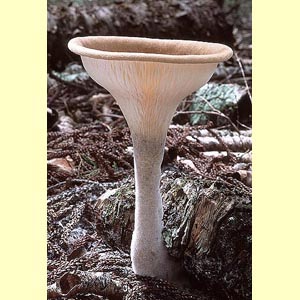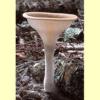

Corner, E.J.H. (1981), The agaric genera Lentinus, Panus and Pleurotus with particular reference to Malaysian species, Beih. Nova Hedwigia 69: 1–169. [Description, B&W Illustration and Microcharacters of P. tuber-regium (as Panus)]
Cribb, J.W. (1994), The fungus Panus tuber-regium in a Queensland Araucaria forest, Queensland Naturalist 32: 137–138. [Description, B&W Illustration and Microcharacters of P. tuber-regium (as Panus)]
Hibbett, D.S. & Thorn, R.G. (1994), Nematode-trapping in Pleurotus tuberregium, Mycologia 86: 696–699. [Demonstrate that P. tuber-regium produces nematotoxic droplets in culture, consistent with its placement in Pleurotus rather than Lentinus or Panus]
Hood, I.A. (2003), An Introduction to Fungi on Wood in Queensland. University of New England, School of Environmental Sciences and Natural Resources Management, Armidale. [Description and B&W Illustration of P. tuber-regium]
Isikhuemhen, O.S., Moncalvo, J.-M., Nerud, F. & Vilgalys, R. (2000), Mating compatibility and phylogeography in Pleurotus tuber-regium, Mycol. Res. 104: 732–737. [Notes that some Australian isolates of P. tuber-regium do not produce sclerotia]
Pegler, D.N. (1983b), The genus Lentinus: a world monograph, Kew Bull., Addit. Ser. 10: 1–281. [Description, B&W Illustration and Microcharacters of P. tuber-regium (as Lentinus)]
Pegler, D.N. (1986), Agaric flora of Sri Lanka, Kew Bull., Addit. Ser. 12: 1–519. [Description, B&W Illustration and Microcharacters of of P. tuber-regium (as Lentinus)]
